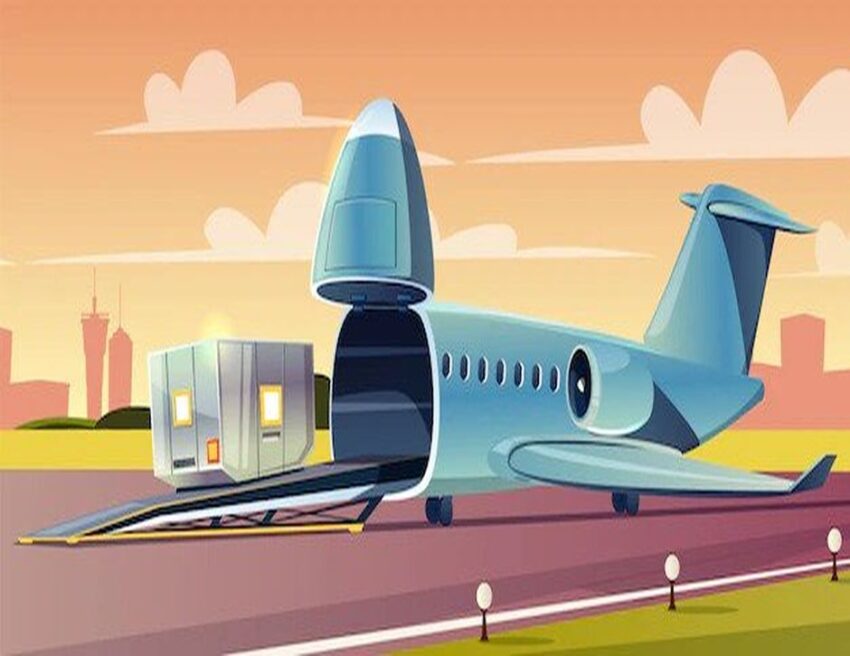The year 2022 started against the background of market volatility. As per a report from Clive Data Services, in January 2022 the air freight shipping industry recorded just a 0.1% increase in air cargo volumes compared to the same time last year. Nevertheless, this volume was at par with the pre-pandemic level with a 0.2% rise. It can be said without a doubt that air freight shipping has become the preferred mode of transportation in the last two years because of the pandemic, port congestion, and instability of the ocean freight sector. Additionally, the e-commerce boom has put renewed pressure on the air freight sector which is struggling to play its part in supporting the international supply chain.
In today’s blog, we are going to take a look at the key trends in the air freight industry and their implications on the global supply chain.

Key trends in the air freight shipping industry
-
Preighters will continue to play an important role
Preighters or cargo in the cabin are passenger aircrafts that temporarily act as cargo planes by loading the shipment in the passenger cabin. They played a major role in moving goods during the peak of the pandemic. Even in 2022, preighters will continue to play a crucial role in international transportation. There is still a strong demand for preighters from air freight forwarders all over the world.
-
Air freight forwarders will continue the investment in digitization
Both the air freight forwarders and the carriers have started digitizing their cargo operations. For example, the carriers are investing in digital platforms that will enable easy access to LSPs. Moreover, a unified digital platform also provides data on capacity, services, and hindrances thus accelerating the supply chain efficiency. The air freight forwarders are also investing in technologies like real-time location tracking and monitoring for better management of end-to-end shipments. Digitization of operations with the help of AI and machine learning could help to predict if the planes are over or underutilized. Digital automation not only allows for better management but also reduces errors and delays in the air freight supply chain.
-
E-commerce will continue to play a pivotal role
The air freight shipping sector got a real boost because of the uptick in e-commerce sales. Moreover, the consumption patterns have changed all over the world and more and more people are now buying their things online. Companies like Amazon have their own freighters that enable them to ensure next-day or even same-day deliveries. When it comes to e-commerce deliveries, air freight is undoubtedly the most convenient transportation mode. Simply put, air freight is a major component of international e-commerce. E-commerce is driving additional use of charter flights throughout this year. In 2022 the air freight industry will further transform itself to maintain its relevance in this digital shift.
-
Air freight rates will continue to be high
Air freight rates will continue to be high since passenger flight operations are still restricted. Additionally, the introduction of new planes into the market remains slow. The Russia-Ukraine war has led to surging fuel prices which in turn will prompt the carriers to apply surcharges. FedEx is one of the operators that has already increased its air freight rates for most shipments. The freight rates per kilogram of shipments from Hong Kong to North America have elevated by $10. The rates from Hong Kong to Europe have risen by $6 for every Kg of cargo. Right now it is impossible to predict when the rates could come back to normal. Truth be told, the rate volatility will continue to plague the industry for several months to come.
-
The war in Ukraine will further add to the capacity constraints
In the first two months of 2022, the spread of the Omicron variant put restrictions on global air freight capacity. Additionally, in the case of a rise in future variants, the capacity of the air freight will be further reduced. Right now the most worrying threat for this sector is the airspace restrictions created because of the Russia-Ukraine war. The crisis in Ukraine has led to airspace restrictions in several countries. Moreover, the rerouting of the freighters has resulted in a substantial increase in flight time between Europe to Asia and Asia to North America. Several airlines like Asiana, Korean Air, and Nippon Cargo Airlines have rerouted their freighters to avoid using the Russian airspace. All these factors will put further pressure on the air freight capacity in the coming months.
-
The airlines will adopt an omnichannel strategy
The massive market demand is prompting the air freight shipping industry to adopt an omnichannel strategy. The carriers are now looking beyond the conventional airport-to-airport services. Instead, they are now focusing on offering end-to-end services. We can already notice this trend in Europe where Swiss World Cargo has teamed up with Swiss Postal Service for better delivery services. Simply put, the airlines are already experimenting with a multichannel approach to sales. This will only continue to grow in the coming months and will help to solve the problem of limited capacity.
With the pandemic and the e-commerce boom, the air freight sector is increasingly becoming more important. Air freight has come to the forefront of the transportation and logistics industry and the above-mentioned trends in this sector are reshaping the future of the global supply chain.


